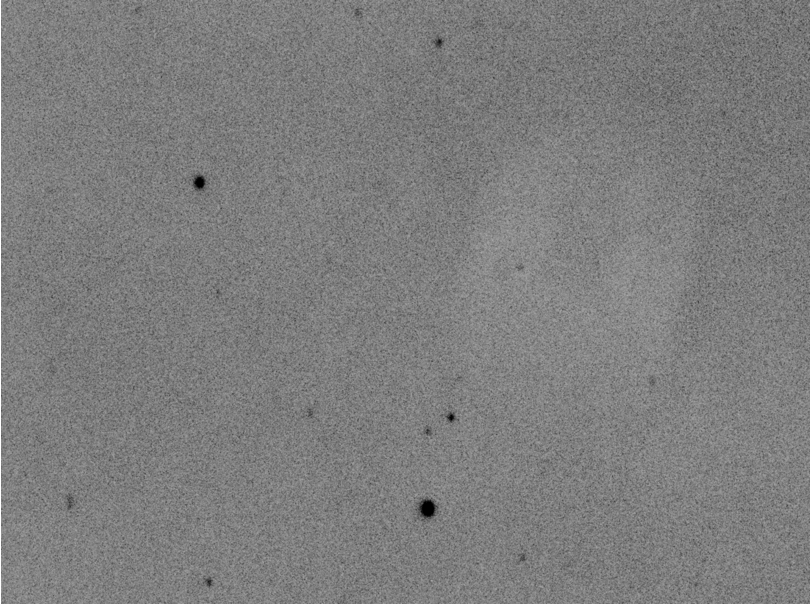
This is 2000 QW7, a medium sized asteroid about 1000-2,100 feet across (300 to 650 meters). Discovered in 2000, it is a little bit bigger than the Empire State Building basically. It's been in the news recently because it came relatively close this past Sunday and would make quite a mess if it hit the Earth. Next closest approach will be in 2038.
I wanted to grab a few frames of the asteroid before it zipped back out into the solar system. At closest approach it's about magnitude 14, which isn't too bad. But it's very low on the horizon where I live (just about 8 degrees altitude at highest point during the night), and there are a lot of trees and power lines in that direction. Not to mention a lot of air mass on top of my usual crappy seeing, and the full moon only a few arc minutes away, and that I've never done a moving target before. The different exposure times and a few dropped frames made the animation a little wonky.
Despite all that, I'm pretty happy how it turned out :)
Subs:
- 25x [30s / 60s / 90s] Luminance subs. Mixture while I tried to find a good exposure
Hardware:
- ASI1600mm Pro
- ZWO LRGB filter set
- Orion 8” f/3.9 astrograph
- AP1100 GTO mount
- Moonlight focuser
- ASI120mini and generic 60mm guidescope
- NINA + PHD2 for software
Location:
- Bortle 4-4.5 ish
- Minimal cloud cover, “below average” seeing, “below average” transparency, 6-10 air masses due to low altitude
Pixinsight Processing:
- Calibration
- Registration
- BatchLinearFit script
- ABE on a sub that I liked
- LocalNormalization on all the other subs (helped remove shadows from electrical lines, trees, moon glow, etc)
- ImageContainer
- SCT + batch Histogram Stretch
- batch Curves
- batch Invert
- Blink
I tried to denoise and stretch more to reduce the background, but the subs are just too noisy and it looked worse with more processing.